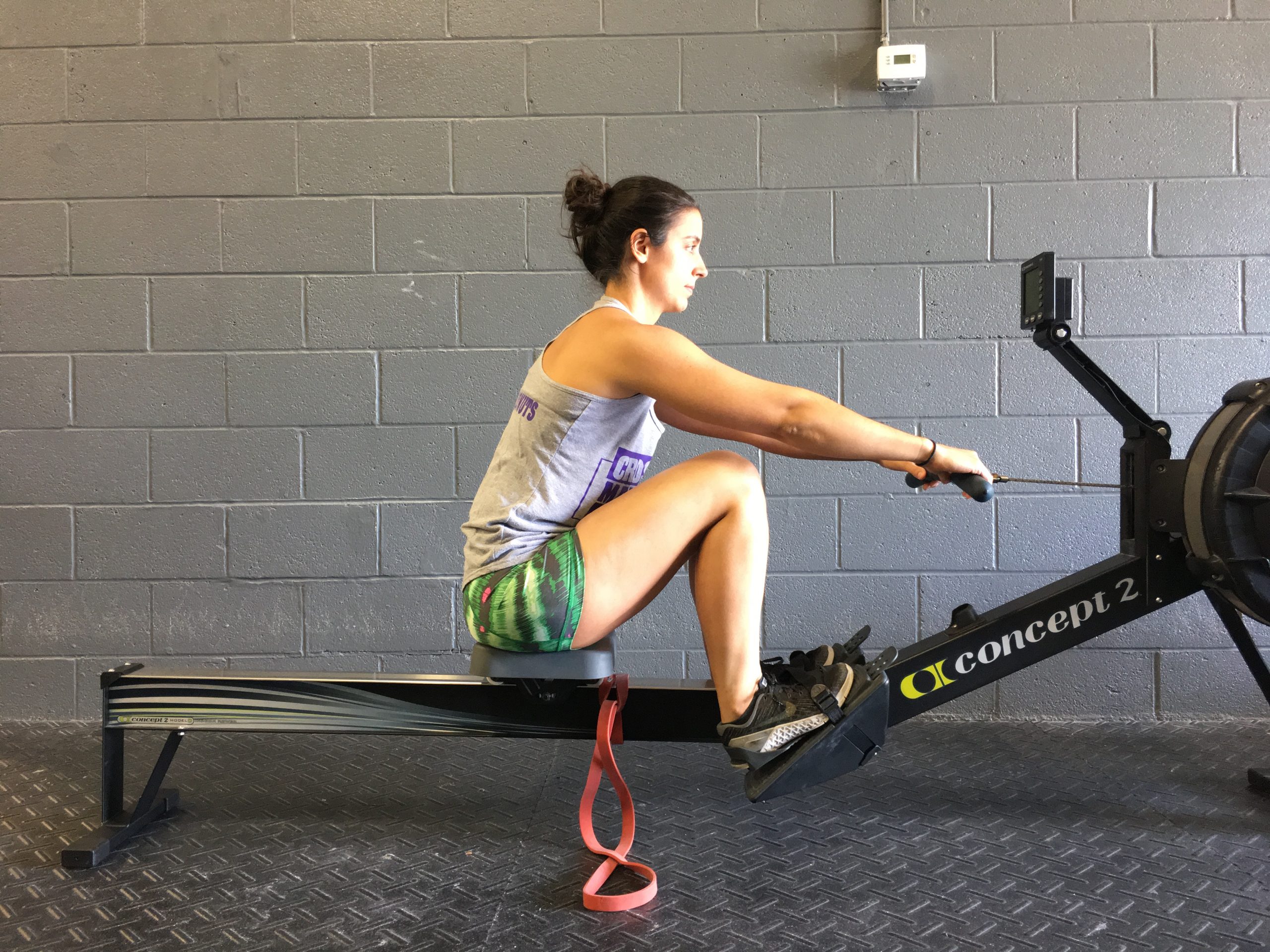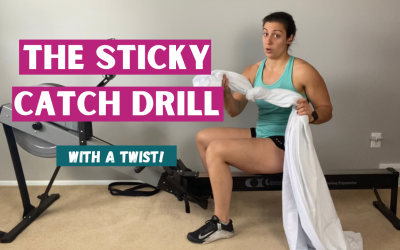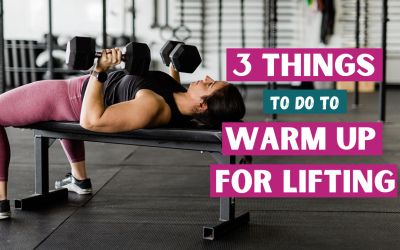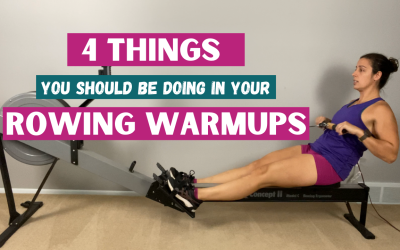Initiating the Drive: Heels not Hips!
If you are initiating the drive with your hips, you will lean back and this puts you in an awkward position. Once you’re there, you will most likely be driving through your toes into the footboards. This is not a strong position to be in.
When you are initiating the drive through your heels, this allows you to have a firm planting on the footboards to apply more power. You want to focus on keeping your shoulders in front of your hips while your legs are driving down. When your legs are almost done will you then lean back and pull in with your arms.
One way to work on this is to limit how much you allow the seat to come up the slide. When you are using your hips, the seat will move forward more, so if we limit this you will be able to feel when you are doing it.

Refer to the picture above. You can use a small bungee cord or a band as shown. Get into an optimal catch position and place the band right in front of the seat wheels at that location. Now try to row with the band there.
You will notice that you won’t be able to move the seat closer if you try to initiate the drive with moving your hips forward. You’ll be able to notice the power you’ve lost. When your seat hits the band, focus on driving down with the heels and keeping your shoulders in the same position relative to your hips.
For many who are used to doing lifts like the clean and snatch, this optimal drive position will feel weird. The biggest take away should be that this position allows you to drive off of your heels, and not your toes. You want to drive through your heels when you clean and snatch, so you want to do it when rowing too!
The Sticky Catch Drill – with a twist!
The sticky catch drill is a great drill to feel the connection at the catch in your rowing stroke. And I have a different way of doing it that you may have never seen before. Most of the time, for the sticky catch drill, you can use a strap or something very sturdy...
3 Things to Do to Warm Up for Strength Training
In this post, I’m going to be talking about warming up for your strength training workouts. There are really three things that you want to do before you start your lifts. I'm Alicia Clark, and I'm a Master Instructor with UCanRow2 and CrossFit Level 1 Trainer, and...
4 Things You Should be Doing in Your Rowing Warmups
Warming up for your rowing workouts is important. Not just for your rowing, but also for your body! Warming up helps your body get ready for what it’s about to do. There are four main things that I recommend you do to warm up for a rowing workout. Let’s get right to...



